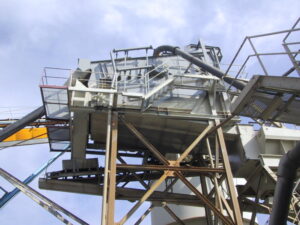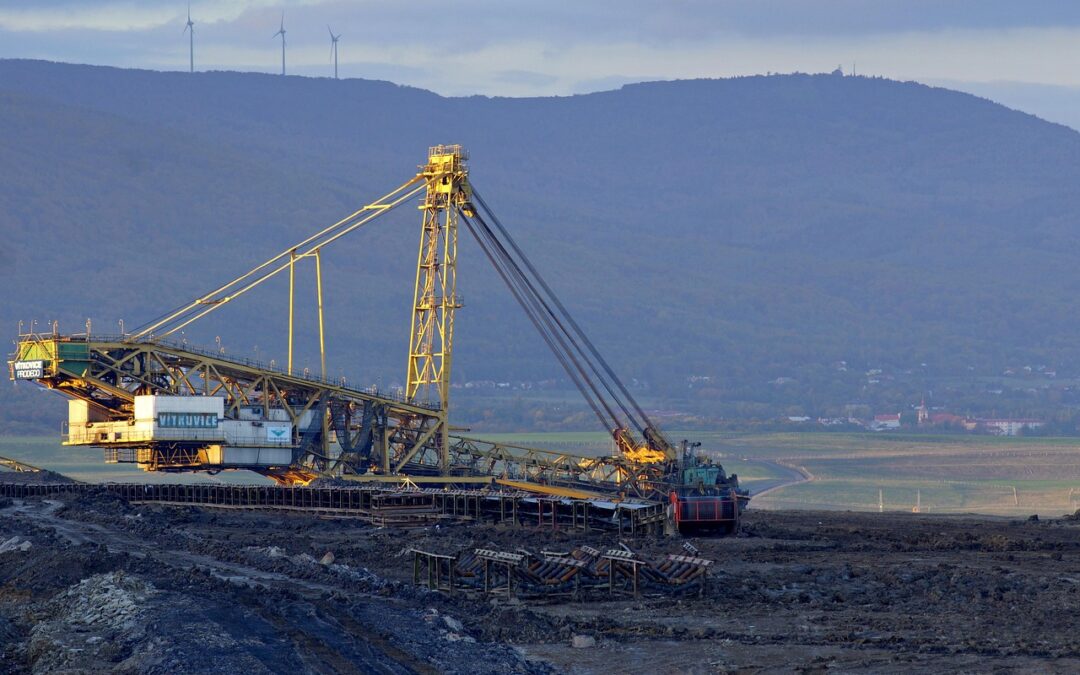Mining operations rely heavily on large, heavy-duty vehicles to transport materials and workers across rugged terrains. These vehicles endure extreme conditions daily, making tire inspections a crucial component of maintaining mine safety. Ensuring tires are in optimal condition not only prevents costly breakdowns but also safeguards workers from potential accidents caused by tire failures.
In this article, we’ll explore the importance of tire inspections, common tire issues, and best practices to ensure mining equipment remains operational and safe.
Why Tire Inspections Are Critical for Mine Safety
Mining environments are harsh, with rocky, uneven surfaces that put immense strain on tires. A single tire failure can lead to accidents, vehicle damage, or even halt entire operations. Regular tire inspections help identify issues before they escalate, ensuring that mining vehicles operate safely and efficiently.
Additionally, routine tire maintenance enhances traction, reduces the risk of blowouts, and contributes to overall site safety. By prioritizing inspections, mining companies can significantly decrease their chances of workplace injuries and costly equipment downtime.
Common Tire Issues That Affect Mining Equipment
Mining tires are subject to extreme conditions that can cause various types of damage. Some of the most common issues include:
- Tread wear – Uneven wear patterns indicate improper alignment or overloading.
- Sidewall damage – Cuts, cracks, and bulges can lead to sudden tire failure.
- Punctures – Sharp debris on mining sites can penetrate the tire, leading to slow leaks or blowouts.
- Heat buildup – Excessive heat due to overloading or underinflation weakens tire integrity.
Addressing these problems through regular tire inspections helps prolong tire lifespan and ensures mine safety is never compromised.
Tire Wear Patterns and What They Reveal About Equipment Health
Tire wear is not just a sign of usage but also an indicator of underlying equipment issues. Different wear patterns provide valuable insights:
- Center wear – Overinflated tires reduce traction and can cause instability.
- Edge wear – Underinflation leads to excessive side stress, increasing blowout risks.
- Diagonal wear – Suggests misalignment or mechanical issues that need immediate attention.
- Cupping or scalloping – Indicates suspension problems that may affect vehicle control.
By analyzing tire wear patterns, maintenance teams can detect potential mechanical issues early, reducing the risk of major failures.
The Impact of Proper Tire Maintenance on Mining Operations
Efficient mining operations depend on well-maintained equipment, and tires play a vital role in overall performance. Proper tire maintenance results in:
- Reduced downtime – Fewer unexpected failures mean continuous workflow.
- Cost savings – Preventing tire-related incidents lowers maintenance expenses.
- Enhanced fuel efficiency – Properly inflated and aligned tires reduce rolling resistance.
- Improved worker safety – Reliable tires decrease the likelihood of accidents.
Mining companies that invest in tire maintenance experience fewer disruptions, making their operations more profitable and secure.
Best Practices for Conducting Thorough Tire Inspections
To ensure mine safety, companies should implement a rigorous tire inspection routine. Best practices include:
- Daily visual checks for cuts, punctures, and sidewall damage.
- Tread depth measurements to assess wear levels.
- Checking inflation pressure to prevent blowouts and improve performance.
- Wheel alignment inspections to reduce uneven wear.
- Using digital monitoring tools for real-time pressure and temperature tracking.
By following these steps, mining teams can prevent issues before they become major hazards.
Technologies Enhancing Tire Inspection Accuracy in Mines
Advancements in technology have significantly improved tire inspection accuracy. Some of the latest innovations include:
- Tire Pressure Monitoring Systems (TPMS) – Real-time alerts for pressure changes.
- Thermal imaging cameras – Detect overheating or structural weaknesses.
- Automated inspection robots – Reduce human error and increase efficiency.
- AI-driven predictive analytics – Analyze data to forecast potential failures.
Integrating these technologies into mining operations ensures more precise tire maintenance, reducing accidents and operational costs.
Training and Certification for Tire Inspectors in the Mining Industry
A well-trained workforce is essential for effective tire inspections. Companies should invest in training programs that cover:
- Recognizing common tire issues and their causes.
- Proper use of inspection tools and monitoring systems.
- Emergency response protocols for tire-related failures.
- Compliance with industry safety standards.
Certifying tire inspectors ensures inspections are conducted thoroughly, leading to safer mining environments.
How Tire Failures Can Lead to Costly Accidents and Downtime
A single tire failure can disrupt an entire mining operation. Consequences include:
- Production delays due to vehicle downtime.
- Increased repair costs for damaged equipment.
- Potential injuries or fatalities from sudden tire explosions.
- Legal and regulatory penalties for safety violations.
Preventative tire inspections mitigate these risks, keeping operations smooth and workers safe.
The Role of Tire Inspections in Preventing Environmental Hazards
Beyond safety, tire maintenance also impacts the environment. Poorly maintained tires contribute to:
- Increased fuel consumption, leading to higher carbon emissions.
- Rubber waste from premature tire replacements.
- Chemical leaks from damaged tires affecting soil and water sources.
By prioritizing tire inspections, mining companies can minimize their environmental footprint and support sustainability efforts.

The Cost-Benefit Analysis of Regular Tire Inspections in Mining
Investing in tire inspections offers a strong return on investment. The benefits outweigh the costs by:
- Extending tire lifespan, reducing replacement expenses.
- Decreasing fuel costs through optimized performance.
- Enhancing safety, preventing liability claims and medical expenses.
- Improving operational efficiency, leading to higher productivity.
For mining companies, regular tire inspections are a cost-effective strategy that ensures long-term profitability and safety.
Ensuring Safe and Efficient Mining Operations Through Tire Inspections
As highlighted throughout this article, tire inspections are a vital aspect of maintaining mine safety. From identifying common tire issues to leveraging cutting-edge technologies, thorough maintenance plays a crucial role in preventing accidents, reducing downtime, and optimizing mining operations.
By implementing best practices, training inspectors, and utilizing advanced monitoring systems, mining companies can protect their workforce, enhance efficiency, and even contribute to environmental sustainability. Prioritizing tire maintenance is not just a safety measure—it’s a smart business strategy.

